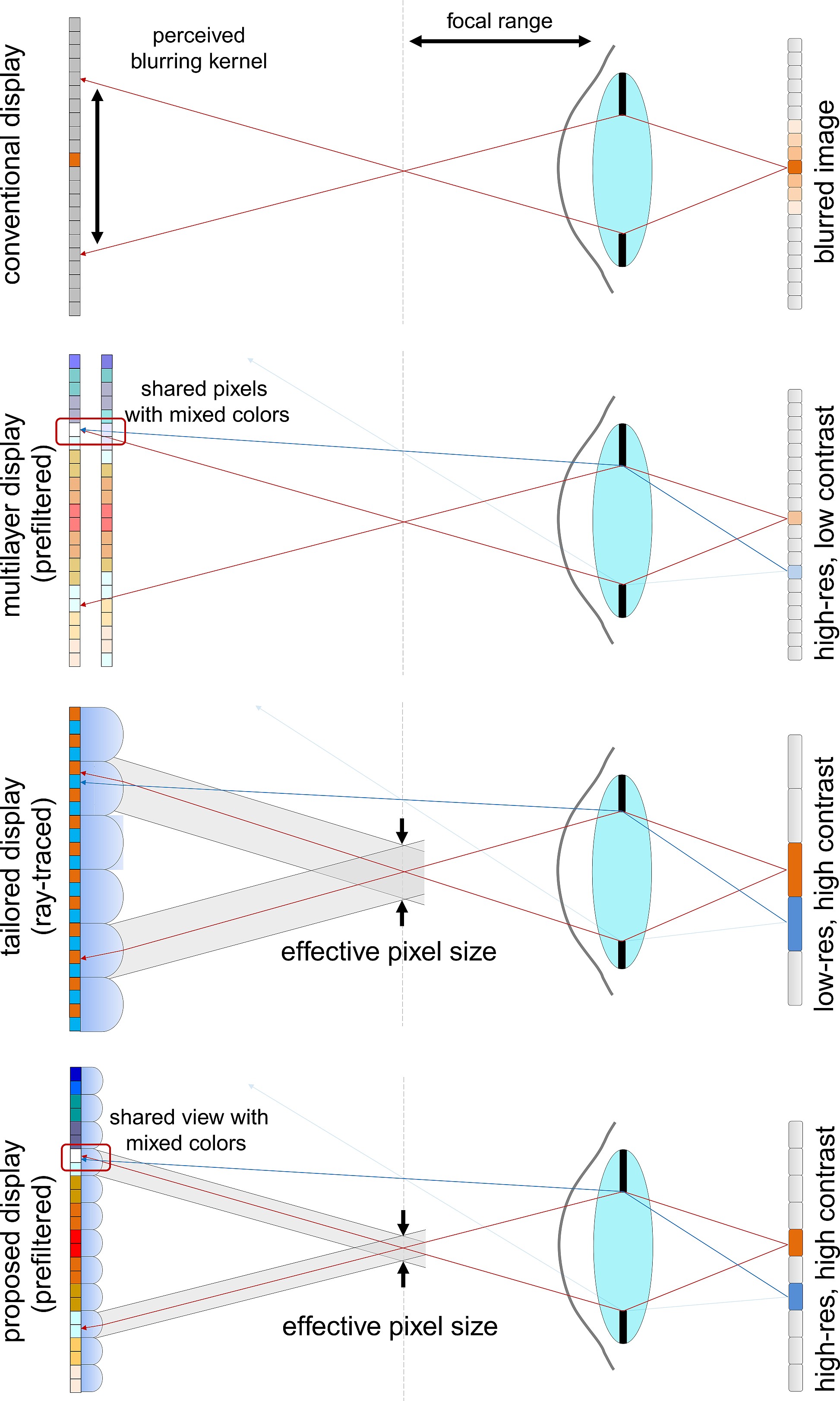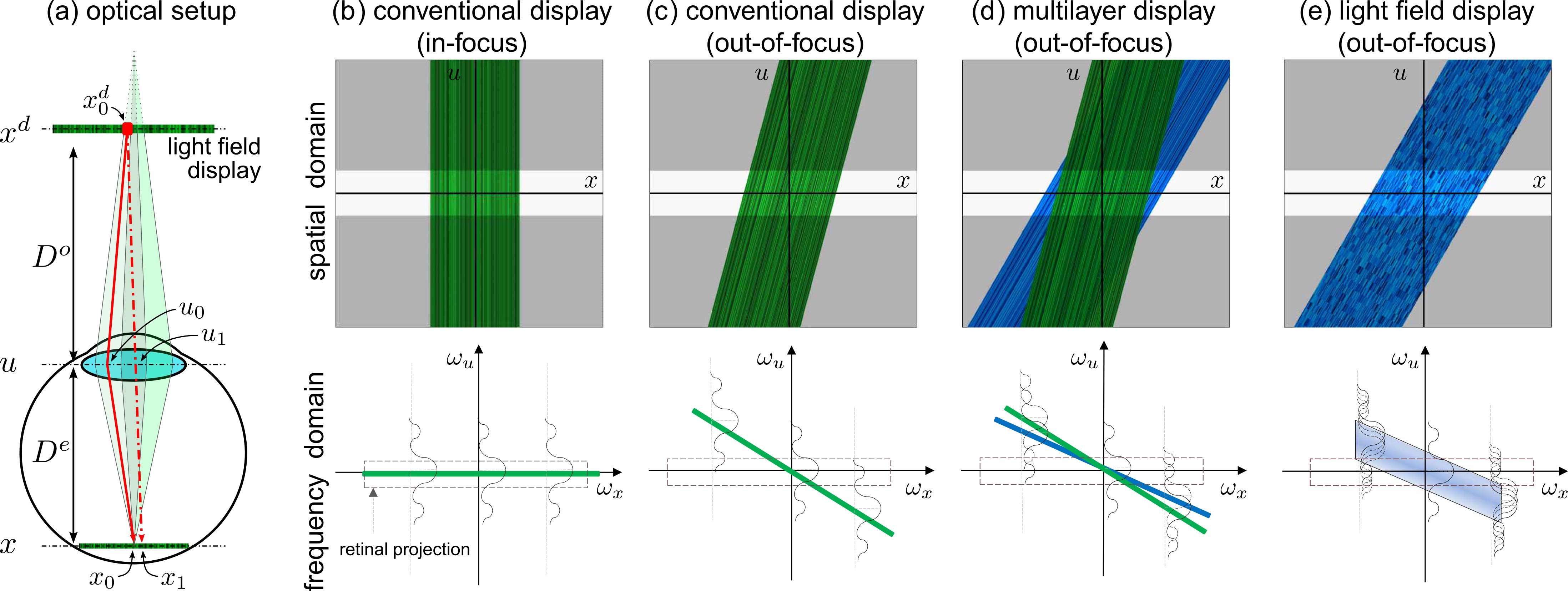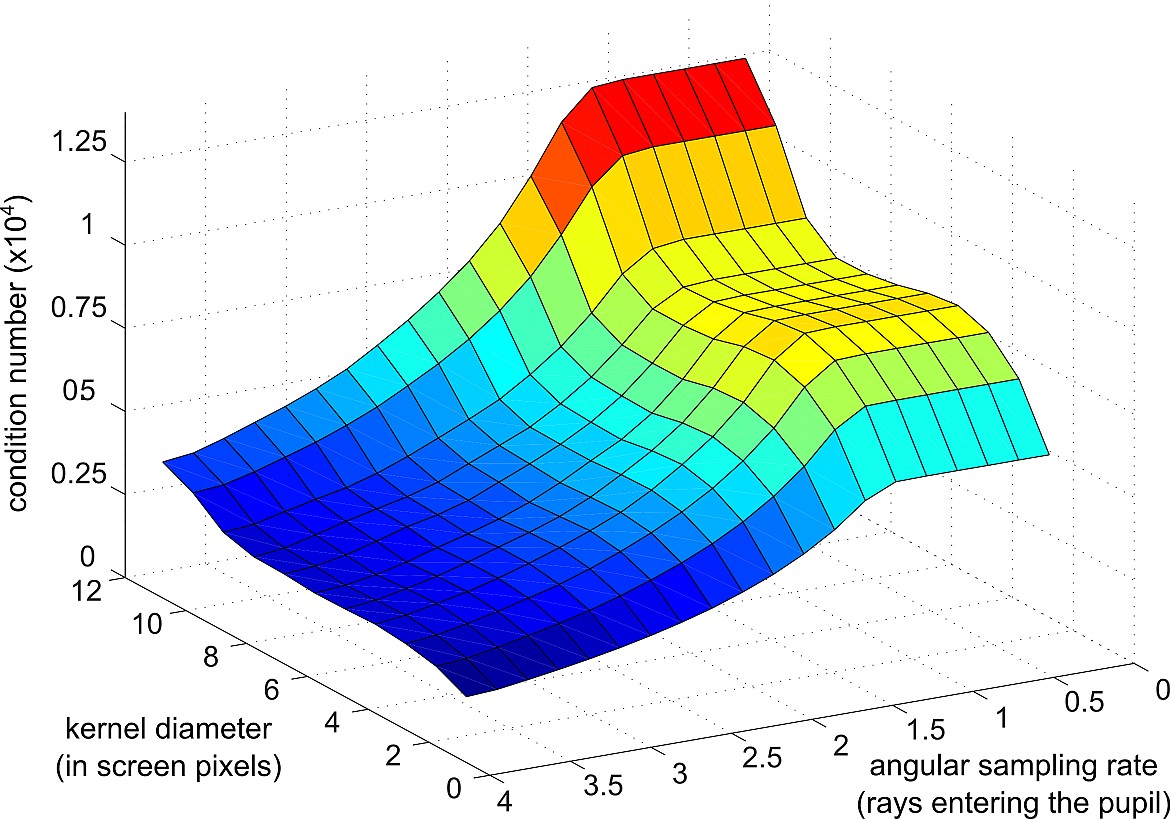Millions of people worldwide need glasses or contact lenses to see or read properly. We introduce a computational display technology that predistorts the presented content for an observer, so that the target image is perceived without the need for eyewear. By designing optics in concert with prefiltering algorithms, the proposed display architecture achieves significantly higher resolution and contrast than prior approaches to vision-correcting image display. We demonstrate that inexpensive light field displays driven by efficient implementations of 4D prefiltering algorithms can produce the desired vision-corrected imagery, even for higher-order aberrations that are difficult to be corrected with glasses. The proposed computational display architecture is evaluated in simulation and with a low-cost prototype device.
| Image credit: MIT Media Lab, Camera Culture Group |
|
|
| Illustration of vision-correcting displays. Observing a conventional 2D display outside the focal range of the eye results in a blurred image (top). A multilayer display with prefiltered image generation (second row) allows for improved image sharpness at the cost of reduced contrast. Image contrast can be preserved using a light field approach via lenslet arrays on the screen (third row); this approach severely reduces image resolution. Combining light field display and computational prefiltering, as proposed in this paper (bottom), allows for vision-correcting image display with significantly improved image resolution and contrast.Image credit: MIT Media Lab, Camera Culture Group |
| Light field analysis for different displays. The light field emitted by a display is parameterized by its coordinates on the screen xd, on the pupil u, and on the retina x (a). This light field propagates through the pupil and is projected into a 2D image on the retina. For an in-focus display, the light field incident on the retina is a horizontal line in the frequency domain (b). For a displayed image outside the accommodation range of the observer, the corresponding light field is slanted and energy is lost at some spatial frequencies (c). Multilayer displays utilize an additional display layer to preserve all spatial frequencies (d). With light field displays, frequency loss is also avoided; the perceived image frequencies are a combination of all spatio-angular frequencies of the incident light field (e). The ray paths in (a) show two effects for a hyperopic eye observing a light field display. First, each photoreceptor on the retina averages over multiple neighboring pixels on the screen (green shaded regions). Second, each pixel on the screen (e.g., xd0) emits different intensities toward different regions on the pupil (u0,u1), allowing the same pixel to appear differently when observed from different locations (x0,x1) on the retina (red arrows).Image credit: MIT Media Lab, Camera Culture Group |
| Light field prefiltering. The proposed prefiltering approach computes a light field (here with 3×3 views) that results in a desired 2D projection on the retina of an observer. The prefiltered light field for an example scene is shown in (a), its simulated projection on the retina in (c), and an image observed on a conventional screen in (b). Spatio-angular frequencies of the light field are amplified, resulting in the desired sharpening when integrated on the retina. Two sample “flatland” light fields with different angular sampling rates are shown in display (d,f) and in eye (e,g) coordinates. Here, the yellow boxes illustrate why 4D light field prefiltering is more powerful than 2D image prefiltering: a single region on the retina receives contributions from multiple different light field views (e,g). Wherever that is the case, the inverse problem of light field prefiltering is well-posed but in other regions the problem is the same as the ill-posed problem faced with conventional 2D displays (e).Image credit: MIT Media Lab, Camera Culture Group |
| Conditioning analysis. The light field projection matrix corresponding to a defocused eye is ill-conditioned. With more angular resolution available in the emitted light field, more degrees of freedom are added to the system, resulting in lower condition numbers (lower is better). The condition number of the projection matrix is plotted for a varying defocus distance (kernel size) and angular resolution (number of light field views). We observe that even as few as 1.5 angular light field samples entering the pupil of an observer decrease the condition number.
Credit : MIT |





